Abstract
The predominant shapes of small opacities on the chest radiographs of 895 British coalminers have been studied. The aims were to determine whether irregular (as distinct from rounded) small opacities can be identified reproducibly, whether their occurrence is related to dust exposure, and whether they are associated with excess prevalence of respiratory symptoms or impairments of lung function. Six of the doctors responsible for regular radiological surveys of all British coalminers each classified all 895 radiographs twice and independently, using the International Labour Organisation's 1980 classification system. The majority view was that 39 films showed predominantly irregular small opacities, 131 showed predominantly small rounded opacities, and 587 showed no small opacities. Readers' opinions varied about the presence and shapes of shadows on the other 138 films. In general, consistency between readers (and within readers on repeated viewings) was satisfactory. The occurrence and profusion of irregular shadows were related significantly both to the men's ages and additionally to their cumulative exposure to respirable coalmine dust as determined from 15 years' dust monitoring close to where the miners had worked. For any given level of exposure, the average level of profusion of the small irregular opacities was less than the corresponding profusion of small rounded opacities. The prevalence rates of chronic cough and phlegm, and of breathlessness, were higher in those with small irregular opacities than in those with no small opacities (category 0/0), but the differences were not statistically significant after adjustment for other factors including smoking habits. The presence of irregular (but not rounded) small shadows was associated with an impairment in respiratory function averaging about 190 ml deficits in both FEV1 and FVC. These deficits were not explicable in terms of the men's ages, body sizes, and smoking habits and they were in addition to the lung function losses attributable to the miners' dust exposure as such. It is concluded that the presence and profusion of small irregular opacities should be taken into consideration when assessing the severity of coalworkers' simple pneumoconiosis.
Full text
PDF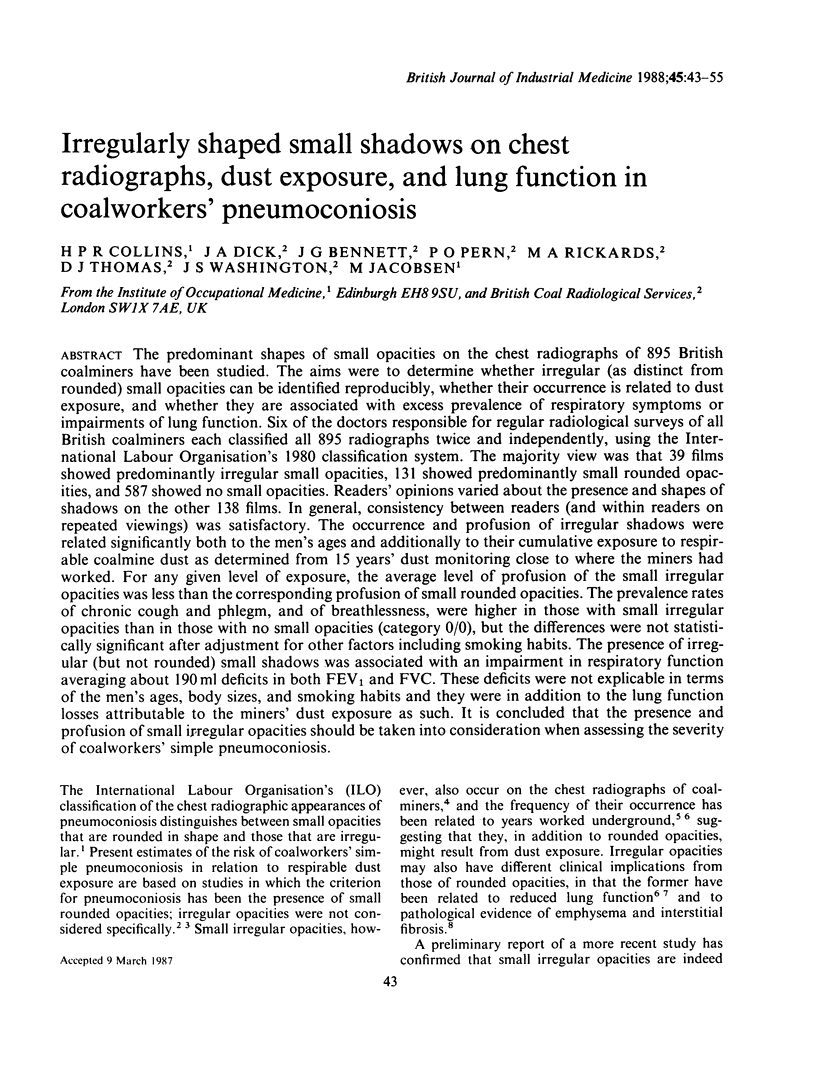
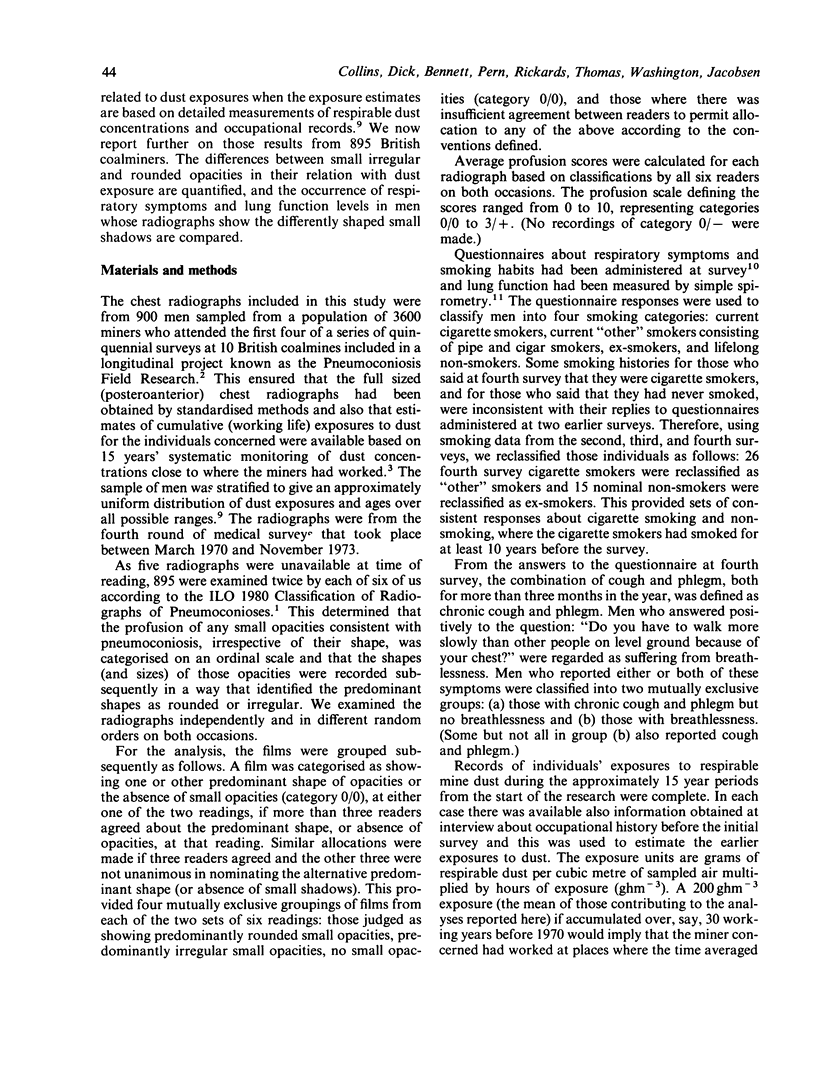
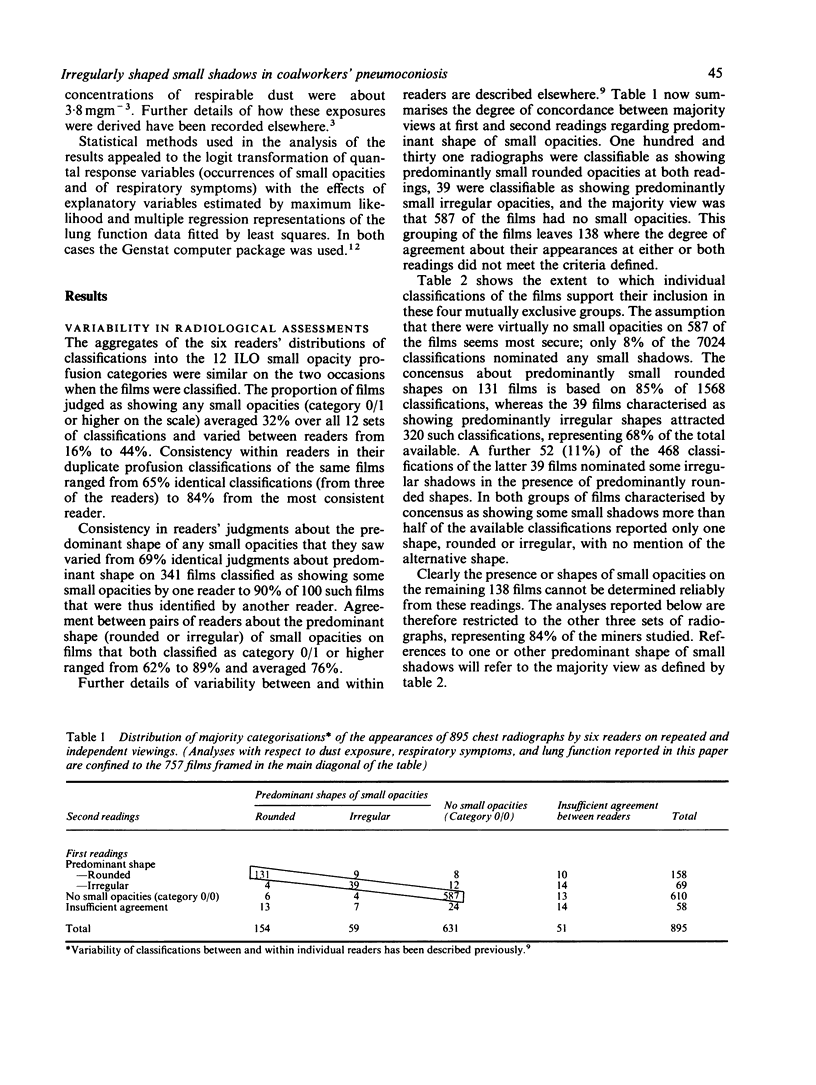
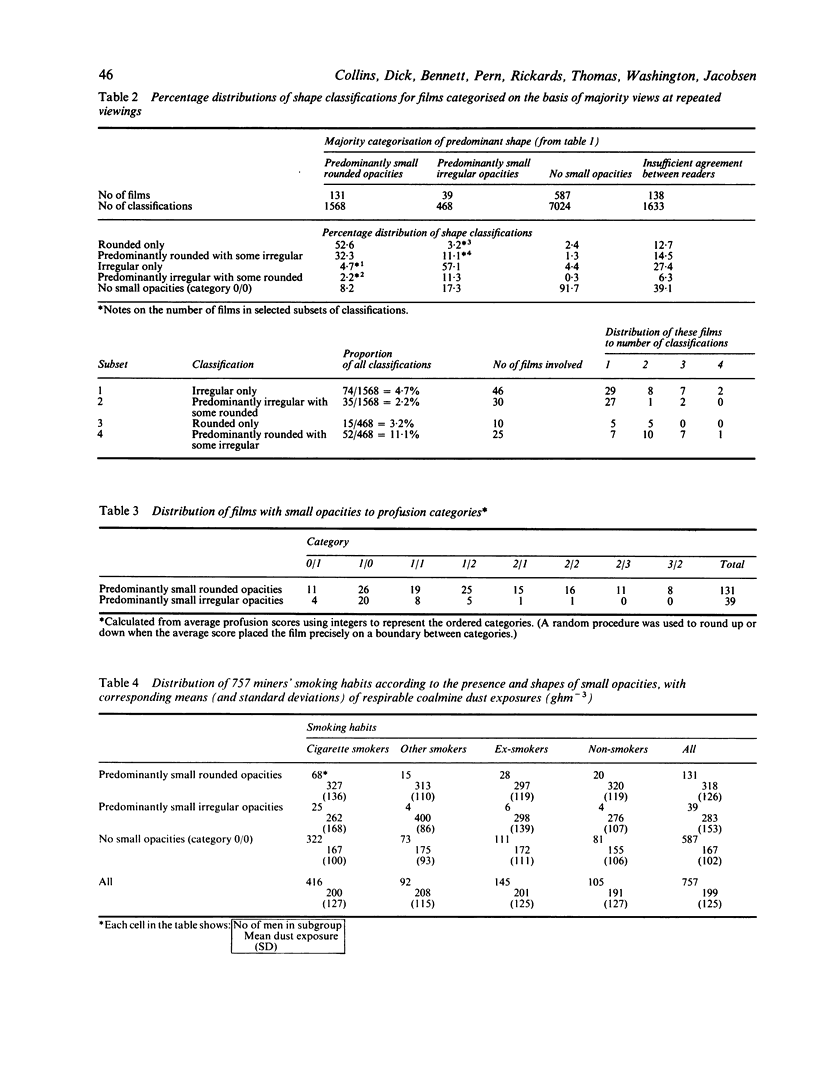
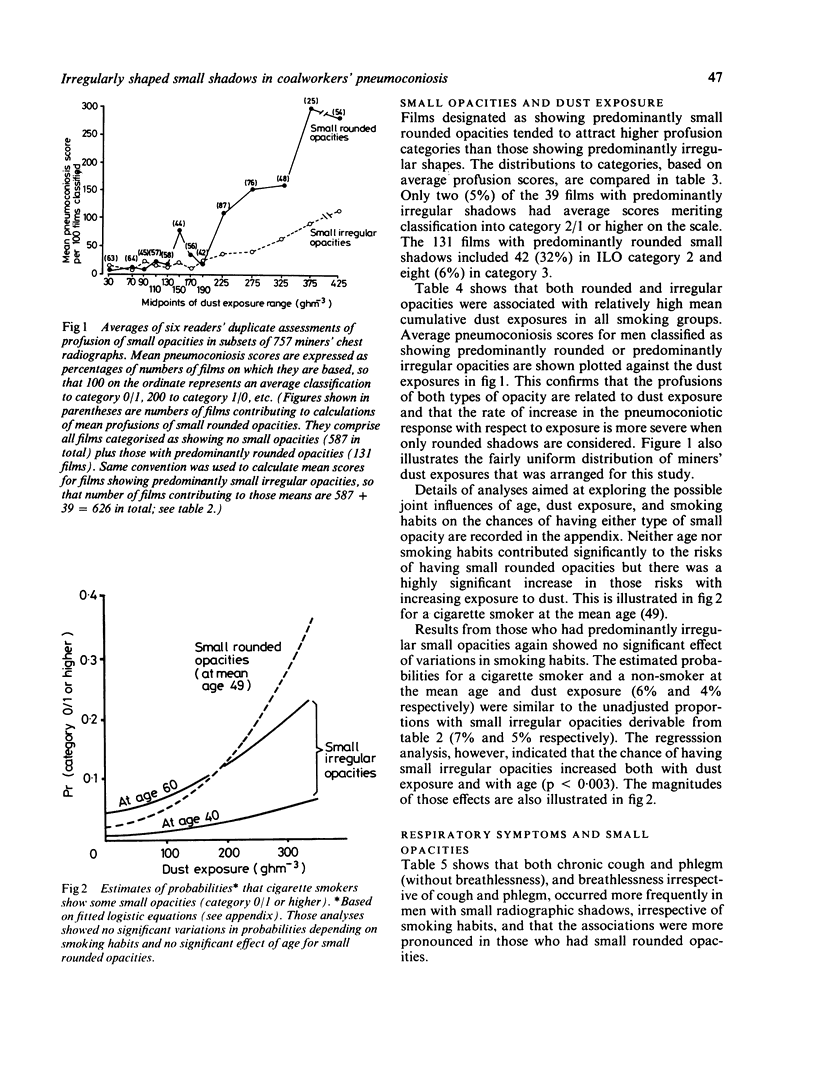
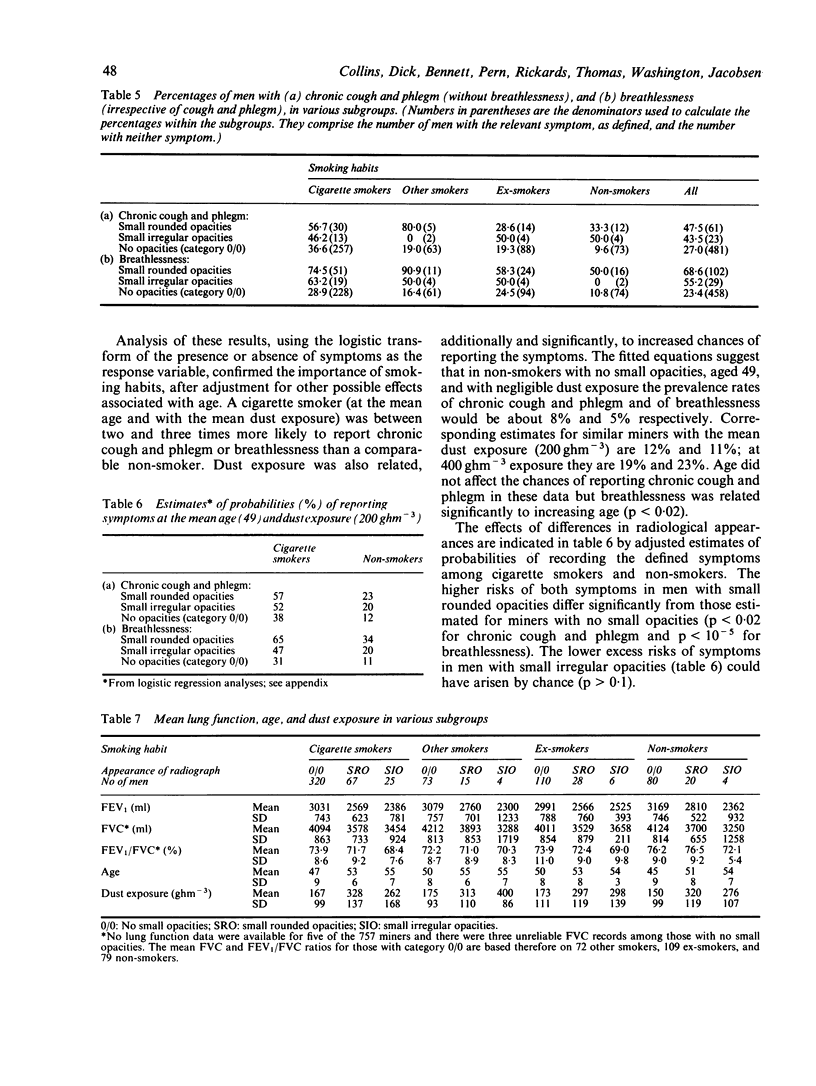
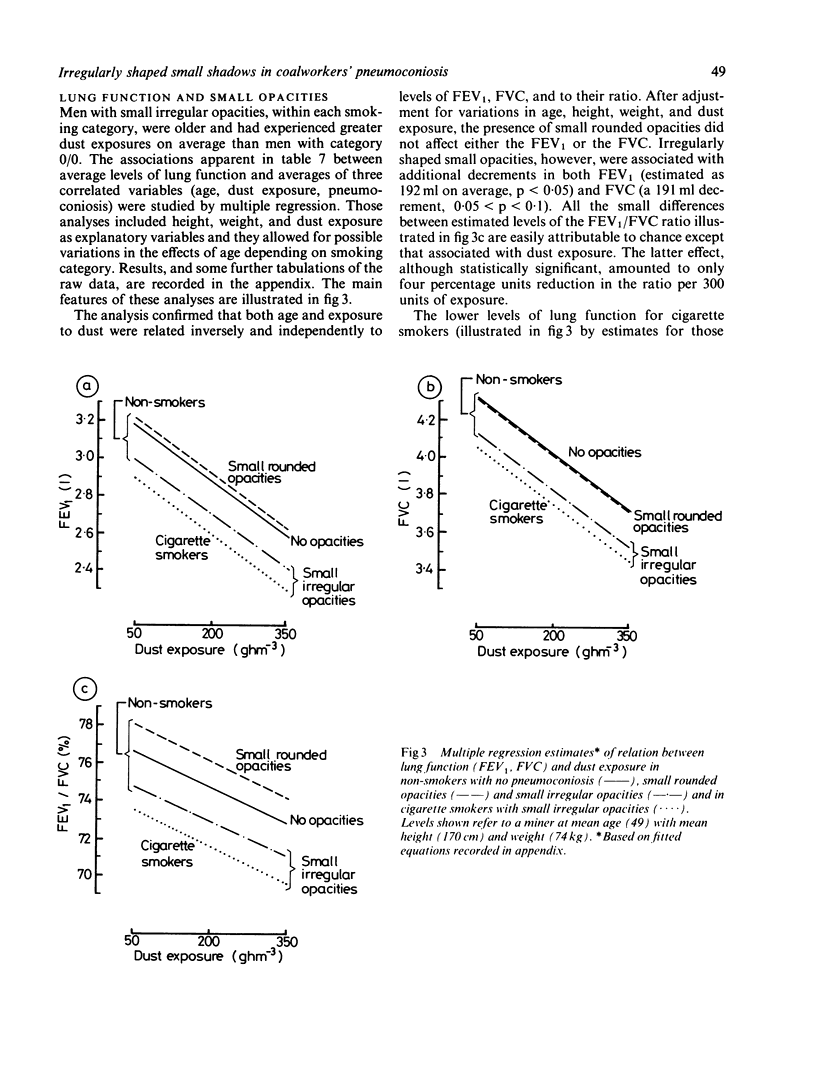
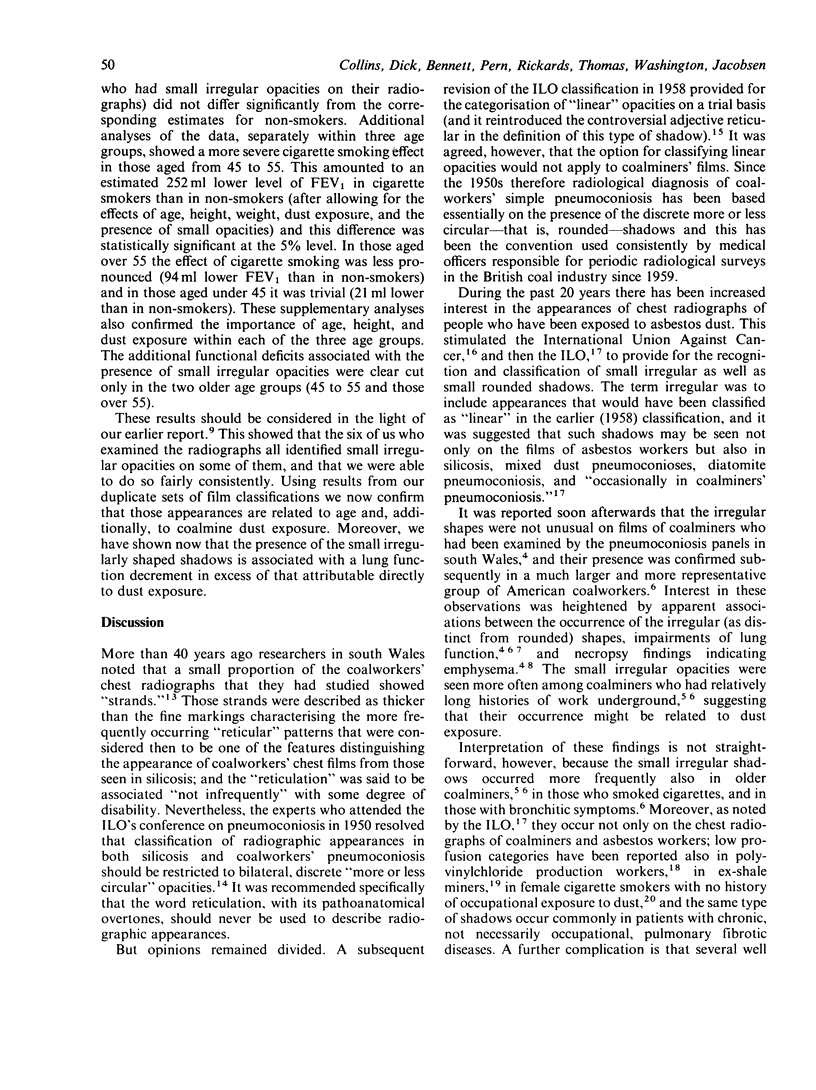
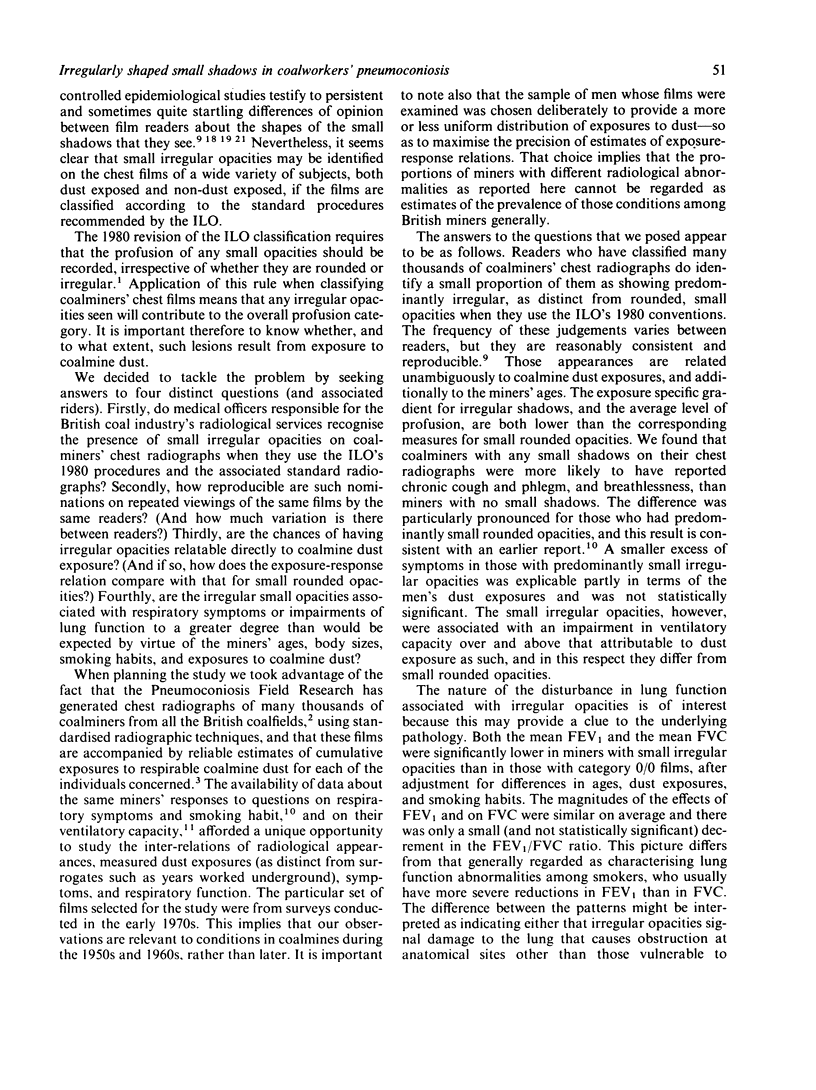
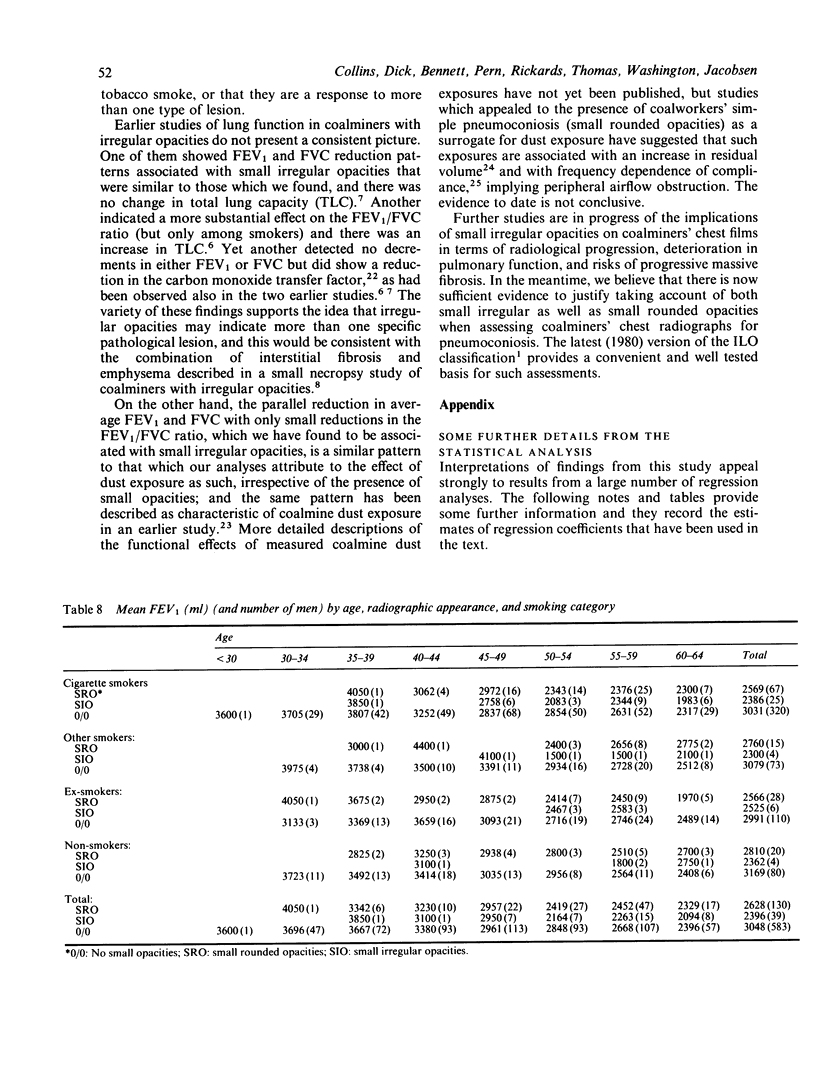
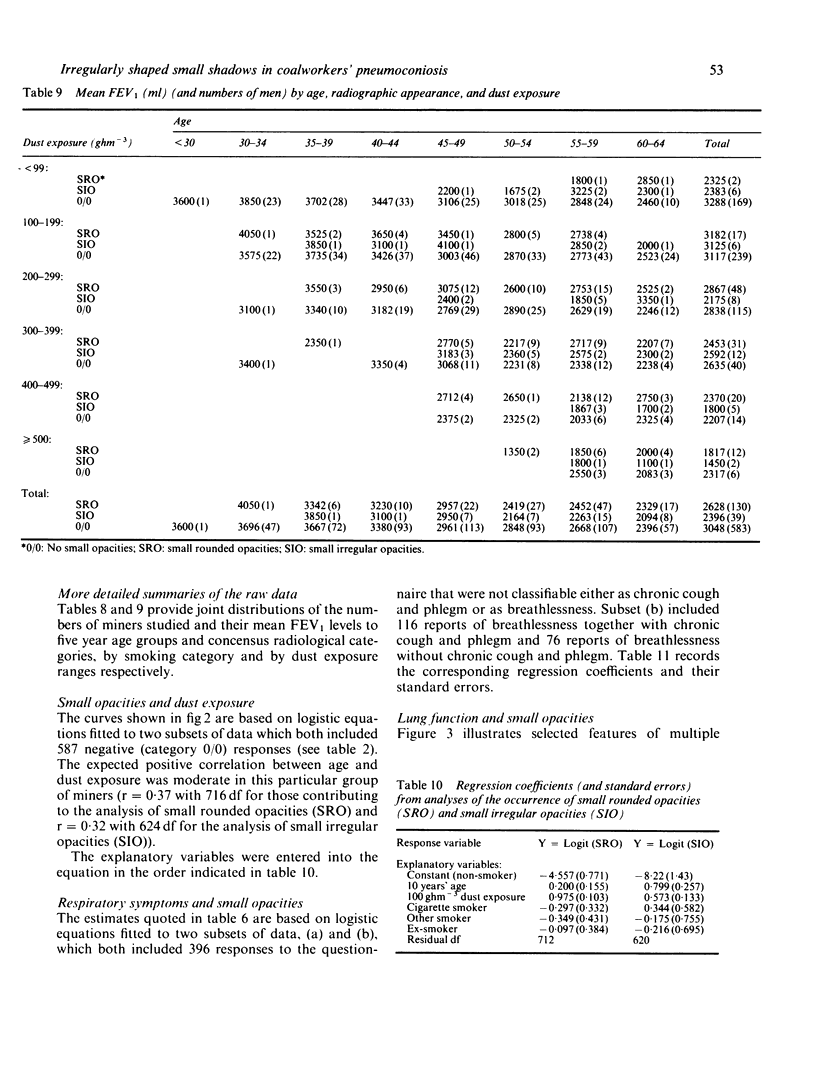
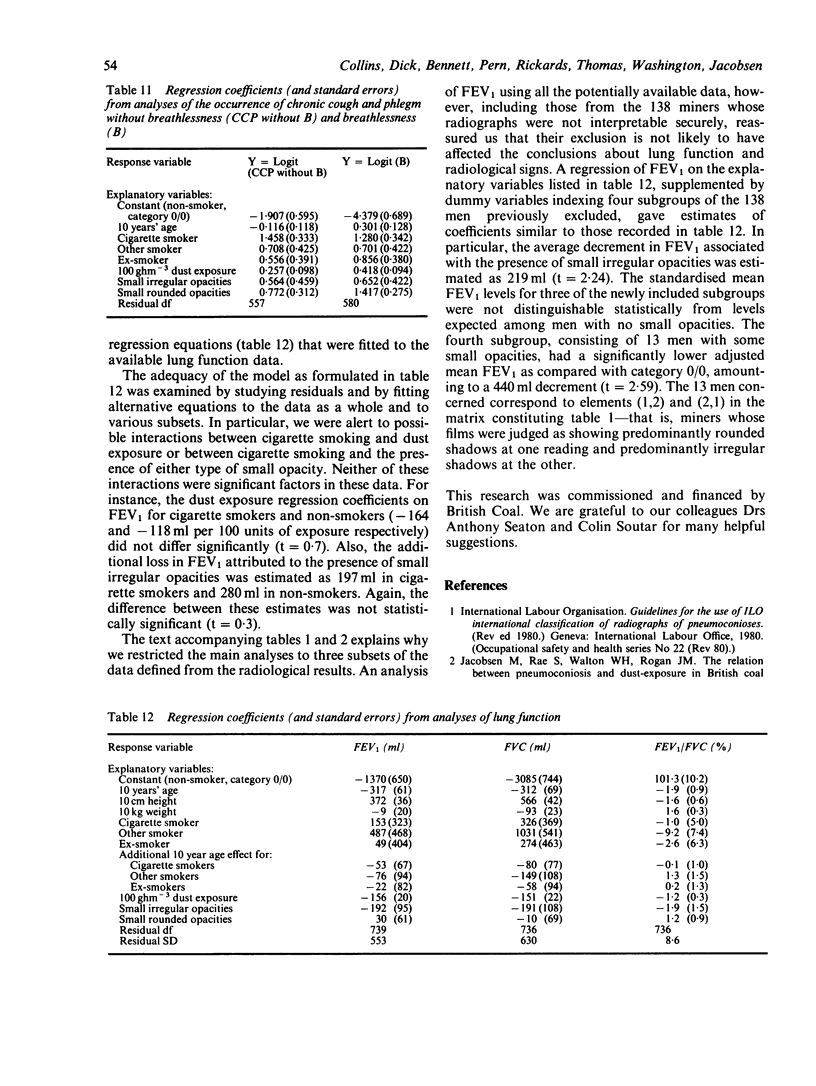
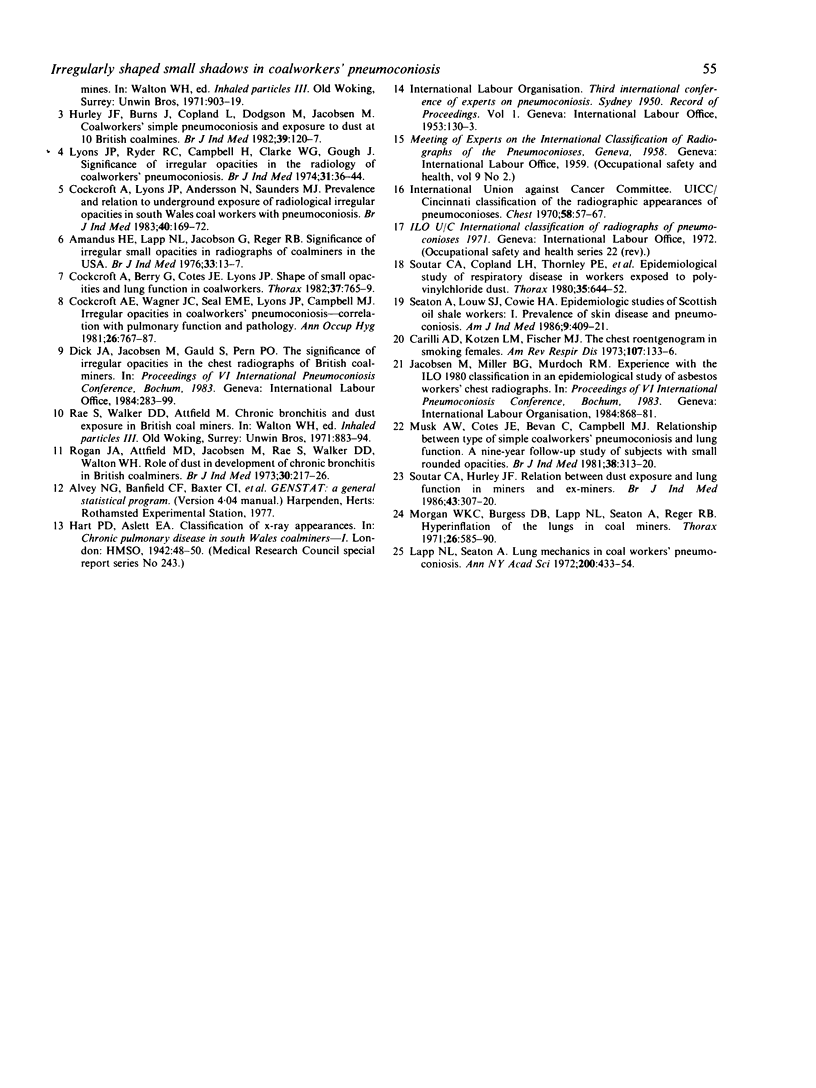
Selected References
These references are in PubMed. This may not be the complete list of references from this article.
- Amandus H. E., Lapp N. L., Jacobson G., Reger R. B. Significance of irregular small opacities in radiographs of coalminers in the USA. Br J Ind Med. 1976 Feb;33(1):13–17. doi: 10.1136/oem.33.1.13. [DOI] [PMC free article] [PubMed] [Google Scholar]
- Carilli A. D., Kotzen L. M., Fischer M. J. The chest roentgenogram in smoking females. Am Rev Respir Dis. 1973 Jan;107(1):133–136. doi: 10.1164/arrd.1973.107.1.133. [DOI] [PubMed] [Google Scholar]
- Cockcroft A. E., Wagner J. C., Seal E. M., Lyons J. P., Campbell M. J. Irregular opacities in coalworkers' pneumoconiosis--correlation with pulmonary function and pathology. Ann Occup Hyg. 1982;26(1-4):767–787. [PubMed] [Google Scholar]
- Cockcroft A., Berry G., Cotes J. E., Lyons J. P. Shape of small opacities and lung function in coalworkers. Thorax. 1982 Oct;37(10):765–769. doi: 10.1136/thx.37.10.765. [DOI] [PMC free article] [PubMed] [Google Scholar]
- Cockcroft A., Lyons J. P., Andersson N., Saunders M. J. Prevalence and relation to underground exposure of radiological irregular opacities in South Wales coal workers with pneumoconiosis. Br J Ind Med. 1983 May;40(2):169–172. doi: 10.1136/oem.40.2.169. [DOI] [PMC free article] [PubMed] [Google Scholar]
- Hurley J. F., Burns J., Copland L., Dodgson J., Jacobsen M. Coalworkers' simple pneumoconiosis and exposure to dust at 10 British coalmines. Br J Ind Med. 1982 May;39(2):120–127. doi: 10.1136/oem.39.2.120. [DOI] [PMC free article] [PubMed] [Google Scholar]
- Lapp N. L. Lung mechanics in coal workers' pneumoconiosis. Ann N Y Acad Sci. 1972 Dec 29;200:433–454. doi: 10.1111/j.1749-6632.1972.tb40207.x. [DOI] [PubMed] [Google Scholar]
- Lyons J. P., Ryder R. C., Campbell H., Clarke W. G., Gough J. Significance of irregular opacities in the radiology of coalworkers' pneumoconiosis. Br J Ind Med. 1974 Jan;31(1):36–44. doi: 10.1136/oem.31.1.36. [DOI] [PMC free article] [PubMed] [Google Scholar]
- Morgan W. K., Burgess D. B., Lapp N. L., Seaton A. Hyperinflation of the lungs in coal miners. Thorax. 1971 Sep;26(5):585–590. doi: 10.1136/thx.26.5.585. [DOI] [PMC free article] [PubMed] [Google Scholar]
- Musk A. W., Cotes J. E., Bevan C., Campbell M. J. Relationship between type of simple coalworkers' pneumoconiosis and lung function. A nine-year follow-up study of subjects with small rounded opacities. Br J Ind Med. 1981 Nov;38(4):313–320. doi: 10.1136/oem.38.4.313. [DOI] [PMC free article] [PubMed] [Google Scholar]
- Rogan J. M., Attfield M. D., Jacobsen M., Rae S., Walker D. D., Walton W. H. Role of dust in the working environment in development of chronic bronchitis in British coal miners. Br J Ind Med. 1973 Jul;30(3):217–226. doi: 10.1136/oem.30.3.217. [DOI] [PMC free article] [PubMed] [Google Scholar]
- Seaton A., Louw S. J., Cowie H. A. Epidemiologic studies of Scottish oil shale workers: I. Prevalence of skin disease and pneumoconiosis. Am J Ind Med. 1986;9(5):409–421. doi: 10.1002/ajim.4700090503. [DOI] [PubMed] [Google Scholar]
- Soutar C. A., Copland L. H., Thornley P. E., Hurley J. F., Ottery J., Adams W. G., Bennett B. Epidemiological study of respiratory disease in workers exposed to polyvinylchloride dust. Thorax. 1980 Sep;35(9):644–652. doi: 10.1136/thx.35.9.644. [DOI] [PMC free article] [PubMed] [Google Scholar]


